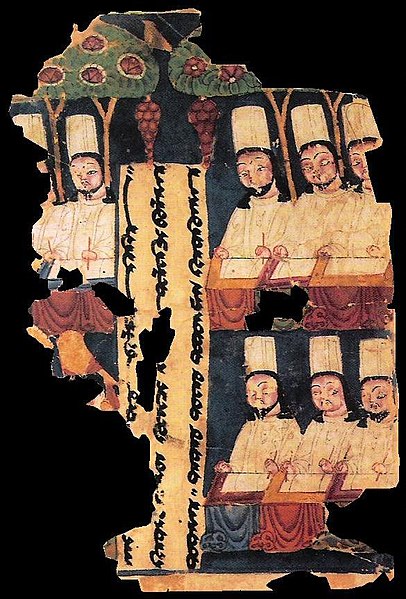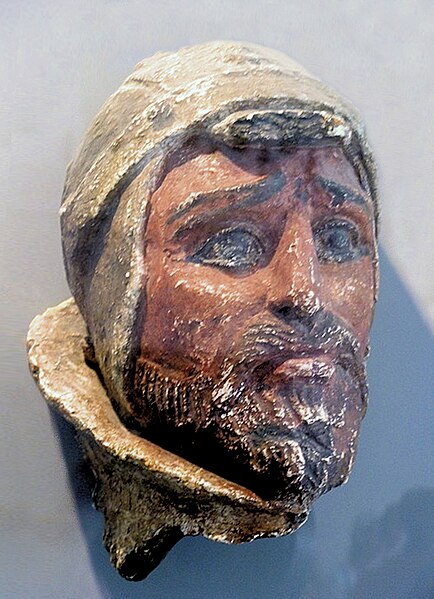The Sogdian language was an Eastern Iranian language spoken mainly in the Central Asian region of Sogdia, located in modern-day Uzbekistan, Tajikistan, Kazakhstan and Kyrgyzstan; it was also spoken by some Sogdian immigrant communities in ancient China. Sogdian is one of the most important Middle Iranian languages, along with Bactrian, Khotanese Saka, Middle Persian, and Parthian. It possesses a large literary corpus.
Seal with two facing busts and Sogdian inscription "Indamic, Queen of Zacanta", Kushano-Sasanian period, 300-350 CE. British Museum 119999.
Sogdian text from a Manichaean creditor letter from around 9th to 13th century
Manichaean priests (Uyghur Turks) writing Sogdian manuscripts, in Khocho, Tarim Basin, c. 8th/9th century AD
Sogdian Christian text written in Estrangelo, discovered at Turpan, 9th—11th century.
Sogdia or Sogdiana was an ancient Iranian civilization between the Amu Darya and the Syr Darya, and in present-day Uzbekistan, Turkmenistan, Tajikistan, Kazakhstan, and Kyrgyzstan. Sogdiana was also a province of the Achaemenid Empire, and listed on the Behistun Inscription of Darius the Great. Sogdiana was first conquered by Cyrus the Great, the founder of the Achaemenid Empire, and then was annexed by the Macedonian ruler Alexander the Great in 328 BC. It would continue to change hands under the Seleucid Empire, the Greco-Bactrian Kingdom, the Kushan Empire, the Sasanian Empire, the Hephthalite Empire, the Western Turkic Khaganate and the Muslim conquest of Transoxiana.
Sogdian soldier circa 338 BCE, tomb of Artaxerxes III.
Sogdians on an Achaemenid Persian relief from the Apadana of Persepolis, offering tributary gifts to the Persian king Darius I, 5th century BC
Head of a Saka warrior, as a defeated enemy of the Yuezhi, from Khalchayan, northern Bactria, 1st century BCE.
A Yuezhi (left) fighting a Sogdian behind a shield (right), Noin-Ula carpet, 1st century BC/AD.








